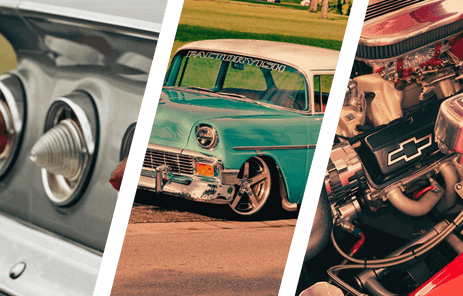We recently ran across a facebook fanpage that stopped us cold in our tracks. While there are frequent references to “Art” in the automotive world, we found an artist that truly does define automotive art with his growing portfolio.
Thomas Patsis would prefer to stay low-key and behind the scenes, letting his art speak for itself, we really wanted to know more about the man behind the torch. We reached out and asked Patsis 10 pretty common questions and the responses that we got in return were very unexpected and refreshing.
Here’s how our 10 Questions with Cold Hard Art went:
Chevy Hardcore: Why did you get started in this unique method of art media?
Thomas Patsis: “I actually started playing with legos when I was a kid, but the metal art was actually a bi-product from just doing some metal art as practice for honing my skills for TIG welding at Don Schumacher Racing (DSR).”
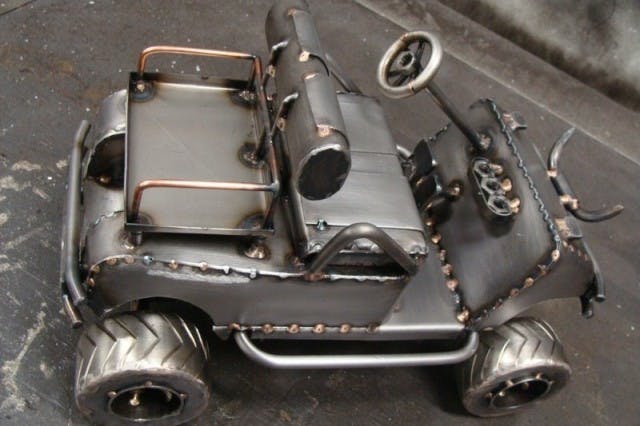
CHC: How did you get started in Automotive?
Patsis: “Well, when I was a kid I built race cars with legos and built every single plastic model I could. I was like all kids and I wanted to be a professional race car driver. Living in Maine that’s pretty crazy idea but I wanted to be in racing so bad that I went to the university of Northwestern Ohio (UNOH) for high performance auto. After that I landed a job at DSR, mostly because of my education.”
I worked on the PRO stock bike team with Antron and Angelle for a few years. Then when they sold the bike team I was offered a job in the fabrication shop at DSR. That really sparked my interest in building stuff again. The launching of Cold Hard Art in 2008 was a direct result of my practicing to be a better Fabby.”
CHC: Did you already have a welder or is this a skill that you developed along the way?
Patsis: “The one big key part was my friend Bodie Brandt (from Texas) that I randomly met at one of our races. I started building a funny car for him and he gave me a MILLER Syncrowave 250 TIG welder. At that point I could keep doing my metal art and make COLD HARD CASH – and that is where the name came from.
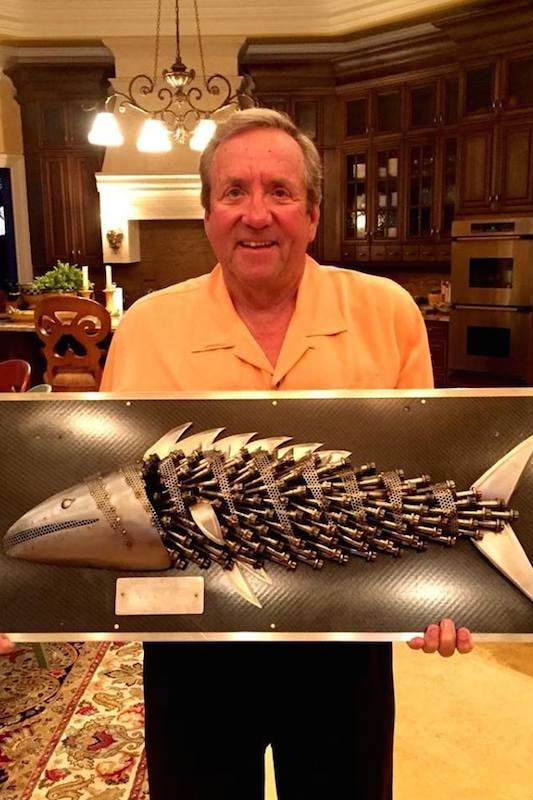
Bodie wanted a bike built sometime in the future, and we were looking forward to starting that build, but in 2010 he was killed in a freak oil derrick accident. Shortly after that I was told about an online contest sponsored by Miller Electric. If you had a Miller welder and had something built, you could enter it and win a chance to compete at a MILLER WELDING SHOWDOWN at their headquarters in Appleton, Wisconsin.
I entered photos of the Funny car I built for Bodie and I was selected as a finalist. This is where my connection with Miller came from.
Even though Bodie is gone, he is still hooking me up and I still build every single piece of art with his welder. I even built a motorcycle that I named the “Bodie Bobber” which I ride the hell out of – so his memory is felt and still with me every single day.”
CHC: When it comes to welding, do you MIG, TIG or both?
Patsis: “I only use the TIG process because its like using a fine tip sharpie compared to the MIG process, which is like a broken crayon. All of my art is mostly made with .022 sheetmetal and I need that fine tip.”
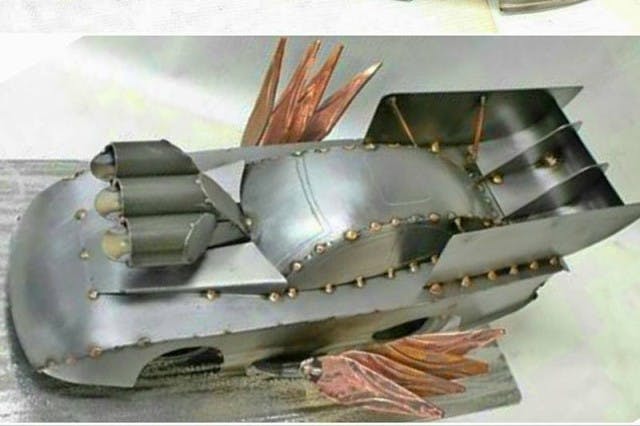
CHC: Do you start with a vision of the final product and go find the parts, or do you find parts and that leads you to what the finished product looks like?
Patsis: “If the piece is meant to be an abstracted (made from old race parts) piece then yes I kind of started mocking it up looking through all my parts which are organized by part and size, then start welding. But if it’s a scaled detailed replica then I normally have photos from the customers, ones that they have emailed, then it’s just build as I go. I don’t do pre-drawings or anything. It’s just pure luck most of the time.”
CHC: What is the most difficult problem that you encounter routinely?
Patsis: “The biggest issue is staying off my stupid phone at night when I’m building art. The phone is great because it helps me when using social media to share my art, but it’s my biggest distraction when I’m by myself and working in the shop.”
CHC: What is your overall goal with Cold Hard Art?
Patsis: “I would like to just make a living off this to be able to keep doing it for many, many years. The fun part is just seeing when I can get people to order my art. The money is fuel to help that goal happen.”
CHC: Do you have a favorite piece or a favorite client?
Patsis: “Well my favorite piece was my first trophy truck I did for Jason Beam, who is a famous helmet painter, mostly because it was a piece I really doubted myself on at the start. In the end, it was one of my favorite pieces to let go. One of my favorite clients has to be Rick Hendrick Motorsports company. They have bought seven scale cars from me. Six of the 1/12 cup cars and one 1967 Corvette replica to give to Rick for being in NASCAR for 30 years as a Christmas gift.”
CHC: What was the most challenging work that you have done?
Patsis: “That one was a Ford Daytona Prototype for the 2012 24 hours of Daytona overall race winner and I only had three days to build it. It was like 4:00 a.m. to late night during a work weekend. I got it done, but it was a crazy time frame.”
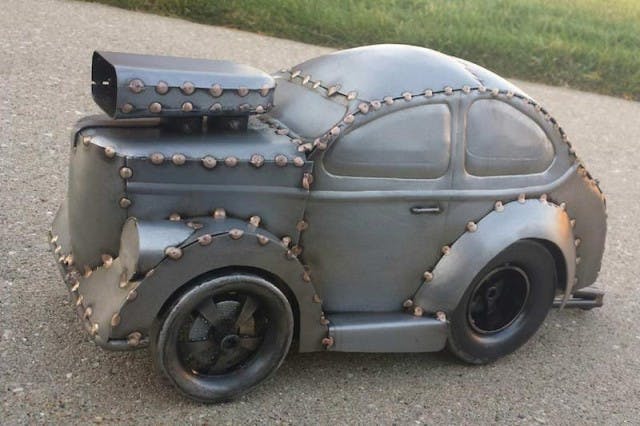
CHC: If someone else was going to get involved in this type of work, what is your best advice?
Patsis: “Well that is a good one! I would say just have a dedicated area for the art. It makes life easier because you are not going to finish pieces in one night. By having a dedicated area for your work you can just stop working on a piece when you start to get tired or frustrated. Don’t push it! You need to be focused or you will just make more work for yourself the next day when you have to cut stuff back off.”
Please enjoy this gallery of Thomas’ work:
You might also like
SEMA 2025: Roadster Shop Debuts 1982-1992 Camaro SPEC Chassis
Roadster Shop's new 1982-1992 Camaro SPEC Chassis is a bolt-in solution that improves performance in every way.



